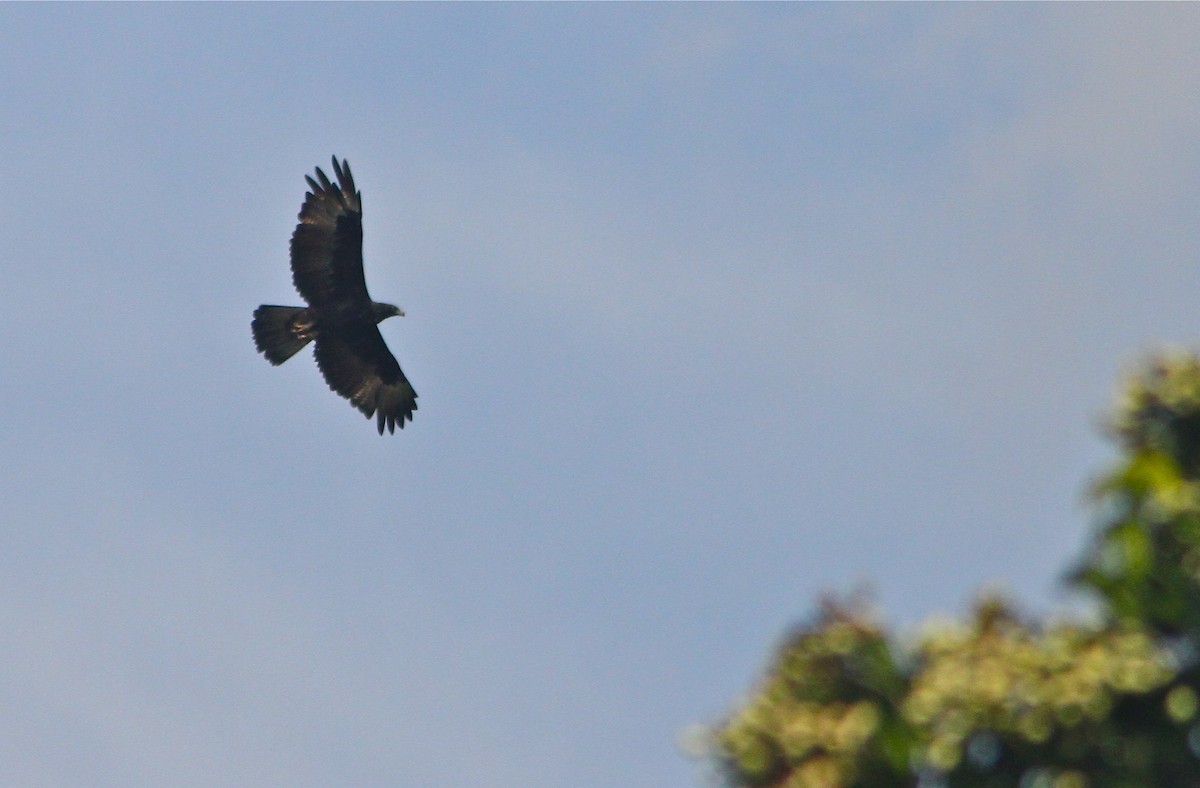Gurney's Eagle
A species of Greater True Eagles Scientific name : Aquila gurneyi Genus : Greater True Eagles
Gurney's Eagle, A species of Greater True Eagles
Botanical name: Aquila gurneyi
Genus: Greater True Eagles
Content
Description General Info
 Photo By Don Roberson
Photo By Don Roberson Description
This eagle is a fairly large species, though mid-sized as a member of the genus Aquila. It is mainly dark brown to black, with paler undersides to its flight feathers and a rounded tail. Its body length is 74–86 cm (29–34 in) with a wingspan of between 1.65 and 1.9 m (5.4 and 6.2 ft). One immature bird reportedly weighed 3.06 kg (6.7 lb). Females are larger than males. Its wings are held level when gliding. It feeds on mammals (such as cuscuses), reptiles, fish, and birds. Juveniles have brown scapular feathers, wing coverts, and back, mottled with gray and buff. The black tail is faintly barred, and the head and underparts are light brown fading into a cream-colored belly and legs. 
Size
86 cm
Nest Placement
Tree
Feeding Habits
Gurney's Eagle is known to feed primarily on mammals like cuscus and arboreal possums, usually foraging alone or in pairs by flying low over forests or using ridge lift to soar. This eagle may consume prey on the ground or in the canopy.
Habitat
Gurney's Eagle typically inhabits a diverse array of forested environments ranging from lowland rainforests to hill and swamp forests, including coastal areas. This extends to forest fringes and adjacent grasslands, as well as clearings and areas altered for agriculture. Though these birds are generally found from sea level up to 1500 meters, they occasionally venture up to 2970 meters. Gurney's Eagle's range is in broad geographical regions of eastern Indonesia and New Guinea, including parts that place them within the limits of Australian territory.
Dite type
Carnivorous
General Info
Feeding Habits
Bird food type
Species Status
Gurney's eagle occurs at low population densities and is likely to be declining slowly through habitat loss and degradation. It is considered to be Near Threatened and is listed on CITES Appendix II. 

 Photo By Don Roberson
Photo By Don Roberson